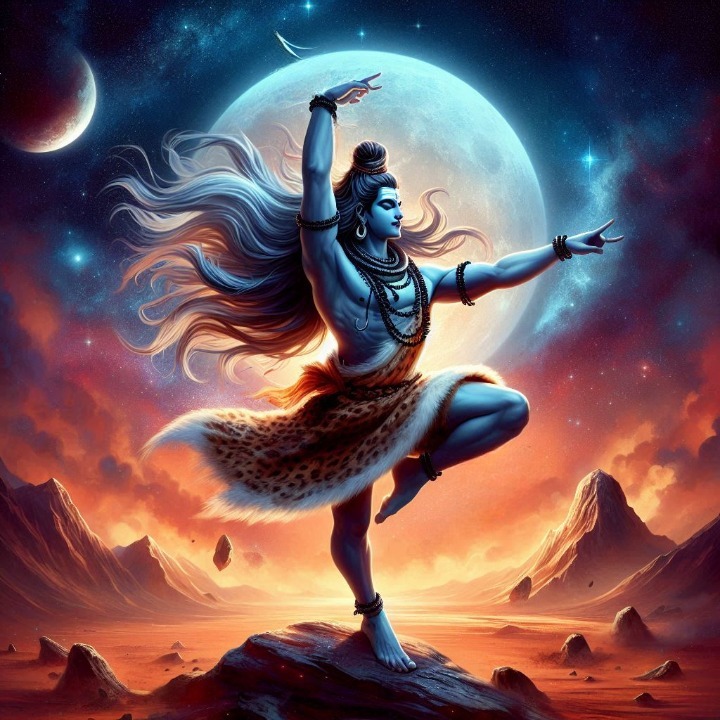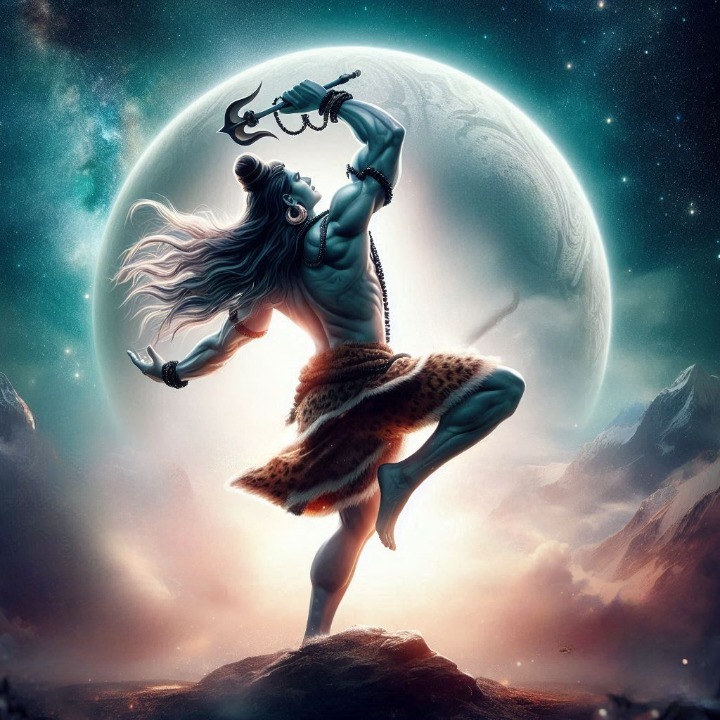Shiva, one of the principal deities of Hinduism, embodies a multitude of paradoxes and profound symbolism. Among the many representations of this great god, Shiva as the Cosmic Dancer, or Nataraja, is one of the most captivating and philosophical. This iconic image portrays Shiva performing the Tandava, a powerful dance believed to manifest the cycles of creation, preservation, and destruction. In this article, we’ll explore the meaning behind Shiva’s cosmic dance, its significance in both Hinduism and modern thought, and why this ancient symbol continues to inspire across cultures and philosophies.
The Origin of Shiva as Nataraja
Shiva’s depiction as Nataraja (meaning “Lord of Dance”) dates back to ancient India, with its roots deeply embedded in the Chola Dynasty of South India during the 9th century. The sculpture of Shiva dancing in a ring of flames, standing on the dwarf demon Apasmara (symbolizing ignorance), is a visual representation of his role in the cosmic cycle. Nataraja is often seen in temples, art, and literature as a metaphor for life’s eternal rhythm.
The Five Acts of Shiva's Dance
Shiva’s cosmic dance represents five universal functions, known in Sanskrit as the Pancha Krityas:
Srishti (Creation) – The dance is a symbol of creation and manifestation. In this context, Shiva is seen as the source from which the cosmos and all beings emerge. His dance sets the universe into motion, bringing forth life, energy, and new beginnings.
Sthiti (Preservation) – As Shiva dances, he also maintains balance in the universe. The rhythm of his movements keeps the cosmos aligned and preserves the harmony between the natural elements.
Samhara (Destruction) – In Hindu philosophy, destruction is not viewed as negative but as an essential part of the cosmic cycle. Shiva’s dance of destruction breaks down all that is old, corrupted, or no longer needed, making room for renewal.
Tirobhava (Concealment/Illusion) – Shiva’s dance also symbolizes the concept of Maya (illusion), where the truth of the cosmos is concealed, causing beings to remain unaware of the ultimate reality. This veil of ignorance keeps the cycle of life, death, and rebirth in motion.
Anugraha (Grace) – Lastly, Shiva bestows his grace, liberating souls from the cycle of rebirth. The final part of the cosmic dance represents moksha or spiritual liberation, wherein one transcends worldly existence and unites with the divine.
Symbolism of the Nataraja Form
The Nataraja form of Shiva is replete with powerful symbolism, each element carrying a deeper meaning:
Ring of Fire: The circular frame of flames around Shiva symbolizes the endless cycle of time. Fire, in Hindu thought, represents both destruction and purification, signifying Shiva’s dual role in creation and dissolution.
Dancing Pose: Shiva’s dynamic posture, known as the Ananda Tandava (Dance of Bliss), represents the joy and ecstasy of cosmic rhythm. His outstretched arms and flowing movements convey his dominion over the universe and time.
Raised Foot: Shiva’s raised right foot symbolizes salvation and liberation, encouraging the souls to rise above ignorance and worldly attachments.
Demon Apasmara: Under Shiva’s left foot lies the dwarf demon Apasmara, who represents ignorance, ego, and forgetfulness. By dancing upon him, Shiva signifies the conquest over ignorance and the ego-driven human mind.
Damru (Drum): In Shiva’s upper right hand, he holds a damru, a small drum that symbolizes the sound of creation, the vibration of the universe, and the rhythm of life.
Flame: In his upper left hand, Shiva holds a flame, representing destruction, dissolution, and the transformative power of fire.
Gesture of Fearlessness: His lower right hand is held in the Abhaya mudra, offering protection and reassurance to his devotees, symbolizing that there is nothing to fear under his cosmic protection.
Shiva's Cosmic Dance and Modern Science
The profound symbolism of Shiva’s dance resonates not only within the realm of religion and philosophy but also finds parallels in modern science. Physicist Fritjof Capra, in his celebrated work The Tao of Physics, explores the connection between Shiva’s dance and modern quantum physics. He describes Shiva’s dance as a metaphor for the pulsating movement of subatomic particles, which continuously create and destroy matter. The dance of Shiva, in this context, mirrors the dynamic flow of energy and matter at the quantum level, offering a mystical yet scientific explanation of the universe’s workings.
Capra writes, “Every subatomic particle not only performs an energy dance, but also is a pulsating process of creation and destruction… For the modern physicists, then, Shiva’s dance is the dance of subatomic matter.” This alignment of ancient spiritual philosophy with contemporary science illustrates the timeless relevance of Shiva’s cosmic dance.

The Global Appeal of Shiva as Nataraja
Shiva’s cosmic dance is not confined to Hindu temples or religious texts; it has inspired artists, writers, and thinkers worldwide. The bronze Nataraja statue installed at CERN, the European Organization for Nuclear Research, reflects the global acknowledgment of Shiva’s cosmic symbolism in relation to scientific exploration. This statue was gifted to CERN by the Indian government, symbolizing the connection between spirituality and scientific discovery.
Additionally, Shiva’s cosmic dance has inspired many forms of art, literature, and music, becoming a powerful symbol of life’s cyclical nature and the universe’s ever-changing dynamics.
Shiva’s Dance in Our Lives
Shiva, the Cosmic Dancer, represents the eternal cycles of birth, life, death, and rebirth that define our existence. His dance embodies the paradoxes of life: creation and destruction, joy and sorrow, illusion and truth. As we navigate our own lives, filled with ups and downs, triumphs and challenges, the image of Shiva dancing amidst the flames reminds us that all is transient, and from every end comes a new beginning.
The ancient symbolism of Shiva as Nataraja continues to resonate with people across cultures and belief systems, offering profound insights into the mysteries of the cosmos and the cycles that govern our existence. Whether we view it through a spiritual lens or as a metaphor for scientific understanding, Shiva’s cosmic dance remains a timeless symbol of life’s dynamic and interconnected nature.



